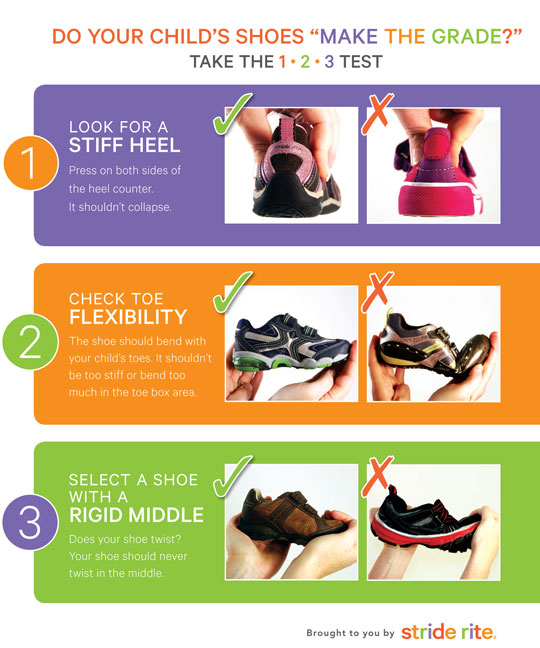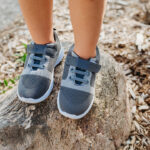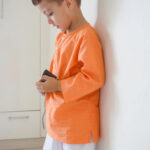Toddler shoes should fit snugly but allow for some wiggle room. There should be about a thumb’s width of space at the toe.
Choosing the right shoes for toddlers is essential for their growth and comfort. Proper fit supports their developing feet and encourages healthy walking habits. Shoes that are too tight can cause pain and lead to foot problems. On the other hand, shoes that are too loose may result in falls or injuries.
Parents should measure their child’s feet regularly, as they grow quickly. Look for shoes made of breathable materials to keep their feet comfortable. A good fit means the shoes should feel secure without being restrictive. Always check for signs of discomfort, like rubbing or pinching, to ensure the best fit.
Table of Contents
Introduction To Toddler Footwear
Choosing the right shoes for toddlers is essential. Their feet grow rapidly, so proper footwear ensures comfort and safety. Shoes not only protect little feet but also support their development. Understanding how toddler shoes should fit is crucial for parents.
The Importance Of Proper Fit
Properly fitting shoes offer numerous benefits:
- Comfort: Shoes should feel good on tiny feet.
- Support: Good shoes provide stability as toddlers walk.
- Growth: Shoes allow room for growing feet.
- Safety: Well-fitted shoes reduce the risk of falls.
Signs of a good fit include:
- Enough wiggle room for toes.
- Heels stay snug without slipping.
- No pinching or rubbing on any part.
Milestones In Toddler Foot Development
Understanding foot development helps in selecting the right shoes. Here are key milestones:
| Age | Development Milestone |
|---|---|
| 0-12 months | Feet are soft and flexible. |
| 12-18 months | First steps begin; shoes offer protection. |
| 18-24 months | Improved balance and coordination. |
| 2-3 years | Running and climbing; shoes must be sturdy. |
Each stage requires different shoe features. Parents should monitor their child’s foot growth. Regularly check shoe fit to ensure comfort and support.
Measuring Toddler Feet
Measuring toddler feet is important for finding the right shoe size. Properly fitting shoes support healthy foot development. Accurate measurements prevent discomfort and injuries. Follow these steps to ensure your toddler’s shoes fit well.
Tools And Techniques
To measure your toddler’s feet, use these tools and techniques:
- Measuring tape: A flexible measuring tape works best.
- Paper and pencil: For tracing the foot outline.
- Ruler: To measure the length and width of the foot.
- Foot measuring device: A specialized tool for accurate measurements.
Follow these steps to measure:
- Have your toddler stand on a flat surface.
- Place a piece of paper under their foot.
- Trace around the foot with a pencil.
- Measure the length from the heel to the longest toe.
- Measure the width at the widest part of the foot.
When And How Often To Measure
Measure your toddler’s feet regularly. Children grow quickly. Check their feet:
- Every 2 to 3 months for toddlers.
- Before buying new shoes.
- When they complain about tight shoes.
Always measure both feet. One foot may be larger than the other. Choose shoes that fit the larger foot. This ensures comfort and support for your little one.
Identifying The Right Shoe Size
Finding the perfect shoe size for your toddler is essential. Properly fitting shoes support their growth and development. Shoes that are too tight can cause pain. Shoes that are too loose can lead to falls. Knowing how to measure their feet is crucial.
Size Charts And Conversions
Using a size chart helps you find the right fit. Sizes can differ between brands. Always measure your child’s feet before buying shoes. Here’s a simple size chart for toddlers:
| US Size | UK Size | EU Size | Foot Length (inches) | Foot Length (cm) |
|---|---|---|---|---|
| 4 | 3 | 19 | 4.5 | 11.4 |
| 5 | 4 | 20 | 5.0 | 12.7 |
| 6 | 5 | 21 | 5.5 | 14.0 |
| 7 | 6 | 22 | 6.0 | 15.2 |
Use this chart to compare sizes. Measure your child’s foot length. Always round up to the nearest size.
Accounting For Growth
Toddlers grow quickly. Buying shoes with room for growth is smart. Leave about half an inch of space in front of their toes. This allows comfort and movement.
- Check shoe size every few months.
- Look for signs of discomfort.
- Inspect shoes for wear and tear.
Choose shoes with adjustable straps or laces. This helps achieve a snug fit. Always prioritize comfort over style.

Credit: www.apma.org
Understanding Shoe Width
Shoe width is crucial for your toddler’s comfort and support. Choosing the right width helps prevent blisters and discomfort. It allows for natural foot movement. Let’s dive into the significance of shoe width and how to determine the correct fit.
Significance Of Width In Comfort
The width of a shoe affects overall comfort. A well-fitted width ensures:
- Proper toe splay
- Reduced pressure points
- Better stability
- Enhanced foot growth
Too narrow shoes can cause:
- Pinched toes
- Painful blisters
- Foot deformities
On the other hand, shoes that are too wide can lead to:
- Slipping off
- Increased risk of tripping
- Less support for growing feet
Determining The Correct Width
To find the right width for your toddler’s shoes, follow these steps:
- Measure your toddler’s foot width.
- Use a measuring tape or ruler.
- Compare the measurement to a size chart.
Here’s a simple width size chart:
| Width | Size |
|---|---|
| Narrow (N) | Size 4 to 10 |
| Regular (R) | Size 4 to 10 |
| Wide (W) | Size 4 to 10 |
Observe how the shoes fit. Ensure there is enough space for the toes. Check for any signs of discomfort after wearing. This will help you choose the best width for your toddler’s shoes.
Selecting The Appropriate Style
Choosing the right style of toddler shoes is essential. The correct fit can support healthy foot development. Styles vary based on activities and needs.
Types Of Toddler Shoes
Understanding different types of toddler shoes helps in making the right choice. Here are some common options:
- Casual Shoes: Great for everyday wear.
- Sneakers: Ideal for active play and sports.
- Sandals: Perfect for warm weather and breathability.
- Boots: Provide warmth and protection in colder months.
- Dress Shoes: Suitable for special occasions.
Activity-based Selection
Selecting shoes based on activity ensures comfort and support. Here’s a guide to help you choose:
| Activity | Recommended Shoe Type |
|---|---|
| Running | Sneakers with good grip |
| Walking | Lightweight casual shoes |
| Playing Outdoors | Durable sneakers or boots |
| Beach or Pool | Water-friendly sandals |
| Special Events | Comfortable dress shoes |
Consider your toddler’s activities. The right shoe enhances safety and comfort. Shoes should be flexible and allow natural foot movement.

Credit: appliedbiomechanics.com
Materials Matter
Choosing the right materials for toddler shoes is crucial. Quality materials affect comfort, support, and overall foot health. Parents must consider breathability and durability. Let’s explore these factors in detail.
Breathability And Durability
Breathable shoes keep little feet cool and dry. This feature prevents sweating and reduces odors. Durable materials ensure shoes last longer. Kids are active. They need shoes that can withstand wear and tear.
- Breathability: Look for shoes with mesh or perforated uppers.
- Durability: Choose shoes made from strong materials like leather or rubber.
High-quality materials can also provide better support. This helps in healthy foot development. Parents should check for both breathability and durability.
Natural Vs. Synthetic Materials
Natural materials offer several benefits. They are often more breathable and flexible. Common natural materials include:
- Leather: Durable and molds to the foot.
- Canvas: Lightweight and breathable.
Synthetic materials can be useful too. They are often water-resistant and easy to clean. Common synthetic materials include:
- Polyester: Lightweight and quick-drying.
- Nylon: Strong and resistant to wear.
Each material has its pros and cons. Parents should consider their child’s needs when choosing shoes.
| Material Type | Pros | Cons |
|---|---|---|
| Natural | Breathable, flexible, molds to foot | Can be expensive, may require special care |
| Synthetic | Water-resistant, easy to clean | May not be as breathable, less flexible |
Understanding these materials helps in making informed choices. Properly fitting shoes contribute to happy, healthy feet for toddlers.
Checking For Support And Flexibility
Choosing the right toddler shoes is crucial. Proper fit helps support healthy foot development. Checking for support and flexibility ensures your child walks comfortably.
Arch Support Needs
Arch support plays a vital role in foot health. Toddlers have developing arches. Shoes should provide gentle support, not stiffness. Look for:
- Soft cushioning under the arch
- Support that doesn’t restrict foot movement
- A shape that matches your child’s foot
Test the arch by pressing with your thumb. It should feel firm but not hard. A shoe that molds to the arch encourages natural foot growth.
Importance Of Sole Flexibility
Flexibility in the shoe’s sole helps with balance. Toddlers need to move freely. A flexible sole allows natural foot motion. Consider these points:
- Shoes should bend easily at the ball of the foot.
- Avoid shoes that are too rigid.
- Check if the shoe twists without effort.
To test flexibility, hold the shoe at both ends. Twist it gently. A good shoe flexes without resistance. This flexibility supports active play and exploration.
Fastenings And Ease Of Wear
Choosing the right fastenings for toddler shoes is crucial. Proper fit ensures comfort and safety. Different fastenings offer various benefits. Consider ease of wear for your little one.
Laces, Velcro, Or Slip-on?
Each type of fastening has its pros and cons:
| Type | Pros | Cons |
|---|---|---|
| Laces |
|
|
| Velcro |
|
|
| Slip-On |
|
|
Teaching Toddlers To Put On Shoes
Helping toddlers learn to wear shoes builds independence. Start with simple methods. Here are some tips:
- Choose shoes with easy fastenings.
- Show them how to put on and take off shoes.
- Make it a fun game.
- Encourage practice every day.
- Offer praise for their efforts.
With patience and practice, toddlers will master this skill.
Comfort Features To Look For
Choosing the right shoes for toddlers is essential. Comfort features play a crucial role in keeping little feet happy. Look for elements that provide support and ease of movement.
Padding And Insoles
Padding is vital for a toddler’s shoe. It cushions their feet and absorbs shock. Here are key points to consider:
- Soft Padding: Soft materials enhance comfort.
- Thick Insoles: Thick insoles provide extra support.
- Removable Insoles: These allow for easy cleaning and replacement.
Good padding reduces the risk of blisters. Look for shoes with breathable insoles. This helps keep feet dry and comfortable.
Toe Room Considerations
Proper toe room is essential for healthy foot development. Shoes should not pinch or squeeze. Consider these factors:
| Feature | Description |
|---|---|
| Space for Movement | Enough space allows toes to wiggle freely. |
| Length and Width | Measure both length and width for a proper fit. |
| Growth Room | Leave about a thumb’s width of space at the toe. |
Check the fit by having your child stand. Their toes should not touch the front. Ensure shoes feel comfortable even during playtime.
Troubleshooting Common Fit Issues
Finding the right fit for toddler shoes is crucial. Sometimes, even the best shoes can cause problems. Here are common fit issues and how to solve them.
Heel Slippage
Heel slippage occurs when the shoe does not hold the heel securely. This can lead to discomfort and instability. Here are some signs and solutions:
- Signs of Heel Slippage:
- Visible gaps at the back of the shoe.
- Toddler frequently trips while walking.
- Foot slides forward inside the shoe.
- Solutions:
- Choose a smaller size for a snug fit.
- Opt for shoes with adjustable straps or laces.
- Look for shoes with a heel counter for support.
Red Marks And Pressure Points
Red marks on the skin can indicate pressure points. This happens when shoes are too tight. Check for these signs:
- Signs of Red Marks:
- Red or sore spots on the foot.
- Foot swelling after wearing shoes.
- Toddler complains of pain while walking.
- Solutions:
- Choose a wider shoe if the foot feels cramped.
- Make sure there’s enough room for toes to wiggle.
- Consider shoes made from soft, flexible materials.
Always measure your toddler’s feet regularly. Their feet grow quickly, and the right fit is essential for comfort. Pay attention to these common issues to ensure happy, healthy little feet.
When To Size Up
Choosing the right shoe size for toddlers is essential. Kids grow quickly. Sometimes, they need a new pair of shoes sooner than expected. Knowing when to size up helps keep their feet comfortable and healthy.
Signs It’s Time For A New Pair
Watch for these signs to determine if your toddler needs new shoes:
- Visible discomfort: If your child complains about sore feet.
- Toe crowding: If toes touch the front of the shoe.
- Worn-out soles: If the soles show significant wear.
- Growing pains: If they experience pain in their feet or legs.
- Frequent tripping: If they stumble more often than usual.
Check your toddler’s shoes every month. Look for any signs of growth or wear. This simple check can prevent discomfort.
Avoiding The Temptation To Oversize
Buying shoes that are too big may seem tempting. Oversized shoes can lead to problems.
| Problem | Effect |
|---|---|
| Injury risk | Increased chance of tripping or falling. |
| Poor posture | Can lead to foot and leg issues. |
| Uncomfortable fit | Causes blisters or chafing on the feet. |
Choose the right size. A snug fit keeps feet stable. Ensure there’s a thumb’s width of space at the toe. This helps with growth without sacrificing comfort.
Care And Maintenance Of Toddler Shoes
Keeping toddler shoes clean and well-maintained is essential. Proper care extends their life and ensures comfort. Parents can follow easy steps to maintain shoe quality.
Cleaning Tips
Regular cleaning keeps toddler shoes looking fresh. Here are simple tips for effective cleaning:
- Spot Clean: Use a damp cloth to wipe off dirt.
- Machine Washable: Check if shoes are machine washable. Use a gentle cycle.
- Air Dry: Avoid direct sunlight. Let shoes dry naturally.
- Odor Control: Sprinkle baking soda inside. Leave overnight and shake out.
Extending Shoe Lifespan
Proper care can help toddler shoes last longer. Follow these tips:
- Rotate Shoes: Change shoes daily to reduce wear.
- Store Properly: Keep shoes in a cool, dry place.
- Check Fit: Regularly check if shoes still fit. Replace if too tight.
- Avoid Puddles: Keep shoes dry to prevent damage.
Use this table for quick reference:
| Action | Benefit |
|---|---|
| Spot Clean | Removes dirt easily |
| Rotate Shoes | Reduces wear and tear |
| Store Properly | Prevents damage |
| Check Fit | Ensures comfort |
Conclusion: Balancing Comfort And Practicality
Finding the right fit for toddler shoes is crucial. Comfort and practicality go hand in hand. Shoes should support little feet without sacrificing style. Parents need to know key factors for the perfect fit.
Recapping Key Takeaways
- Measure Feet Regularly: Toddlers grow quickly. Measure their feet every few months.
- Check Width and Length: Shoes should have enough room. The toes must not feel cramped.
- Look for Flexibility: Shoes should bend easily. This allows natural movement.
- Choose Breathable Materials: Fabrics like canvas or leather are great. They keep feet cool.
- Avoid High Heels: Stick to flat shoes. They promote better balance.
Encouraging Healthy Foot Development
Healthy foot development starts with the right shoes. Here are some tips:
- Choose shoes that allow natural movement.
- Look for cushioned soles to support little feet.
- Encourage barefoot play at home.
- Rotate shoes to avoid wear and tear.
A good shoe promotes healthy growth. Monitor how your toddler walks. Ensure they feel comfortable in their shoes. Happy feet lead to happy playtimes!

Credit: www.elthamfootclinic.com.au
Frequently Asked Questions
How Tight Should Toddler Shoes Be?
Shoes should fit snugly but not pinch. There should be about a thumb’s width of space at the toe.
What Size Shoe Does My Toddler Need?
Measure your toddler’s foot regularly. Size can vary by brand, so always check the sizing chart before purchasing.
How Often Should Toddler Shoes Be Replaced?
Replace toddler shoes every 2-3 months or when they outgrow them. Check for wear and proper fit frequently.
Should Toddlers Wear Shoes Indoors?
It’s best for toddlers to go barefoot indoors. This promotes natural foot development and helps with balance and coordination.
Conclusion
Choosing the right fit for toddler shoes is crucial. Proper fitting helps support their growing feet. Always measure their feet before buying new shoes. Check for comfort and room to grow. A good fit ensures happy, active toddlers. Invest time in finding the perfect shoes for your little one.







